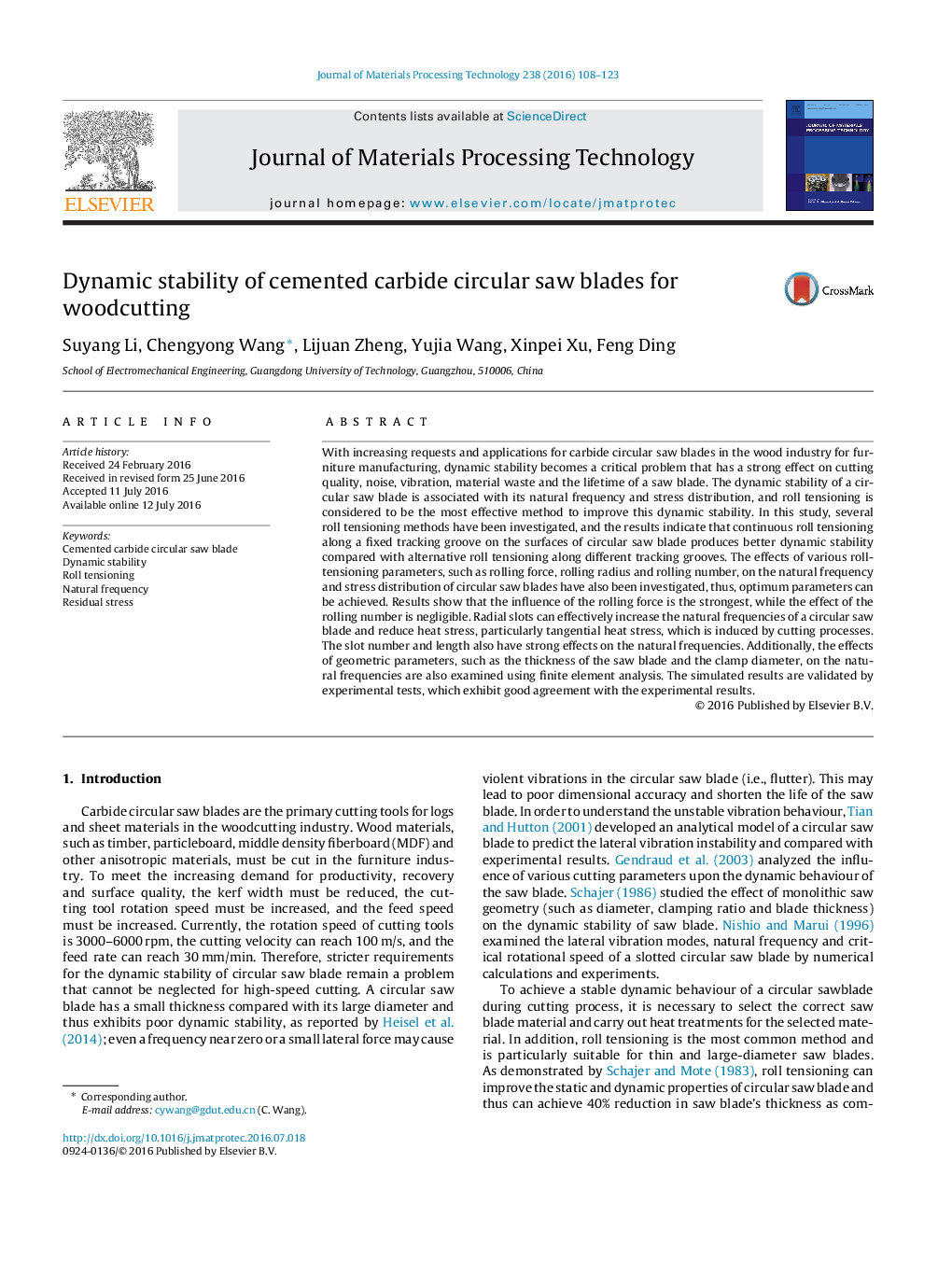| Article ID | Journal | Published Year | Pages | File Type |
|---|---|---|---|---|
| 7176642 | Journal of Materials Processing Technology | 2016 | 16 Pages |
Abstract
With increasing requests and applications for carbide circular saw blades in the wood industry for furniture manufacturing, dynamic stability becomes a critical problem that has a strong effect on cutting quality, noise, vibration, material waste and the lifetime of a saw blade. The dynamic stability of a circular saw blade is associated with its natural frequency and stress distribution, and roll tensioning is considered to be the most effective method to improve this dynamic stability. In this study, several roll tensioning methods have been investigated, and the results indicate that continuous roll tensioning along a fixed tracking groove on the surfaces of circular saw blade produces better dynamic stability compared with alternative roll tensioning along different tracking grooves. The effects of various roll-tensioning parameters, such as rolling force, rolling radius and rolling number, on the natural frequency and stress distribution of circular saw blades have also been investigated, thus, optimum parameters can be achieved. Results show that the influence of the rolling force is the strongest, while the effect of the rolling number is negligible. Radial slots can effectively increase the natural frequencies of a circular saw blade and reduce heat stress, particularly tangential heat stress, which is induced by cutting processes. The slot number and length also have strong effects on the natural frequencies. Additionally, the effects of geometric parameters, such as the thickness of the saw blade and the clamp diameter, on the natural frequencies are also examined using finite element analysis. The simulated results are validated by experimental tests, which exhibit good agreement with the experimental results.
Related Topics
Physical Sciences and Engineering
Engineering
Industrial and Manufacturing Engineering
Authors
Suyang Li, Chengyong Wang, Lijuan Zheng, Yujia Wang, Xinpei Xu, Feng Ding,
